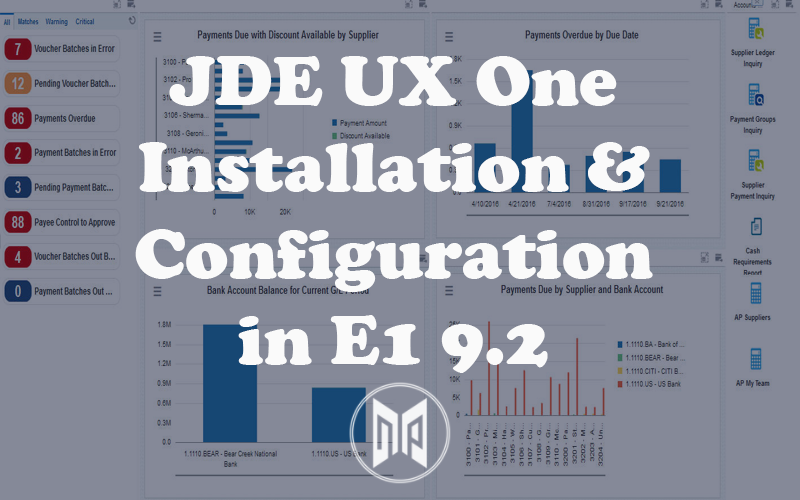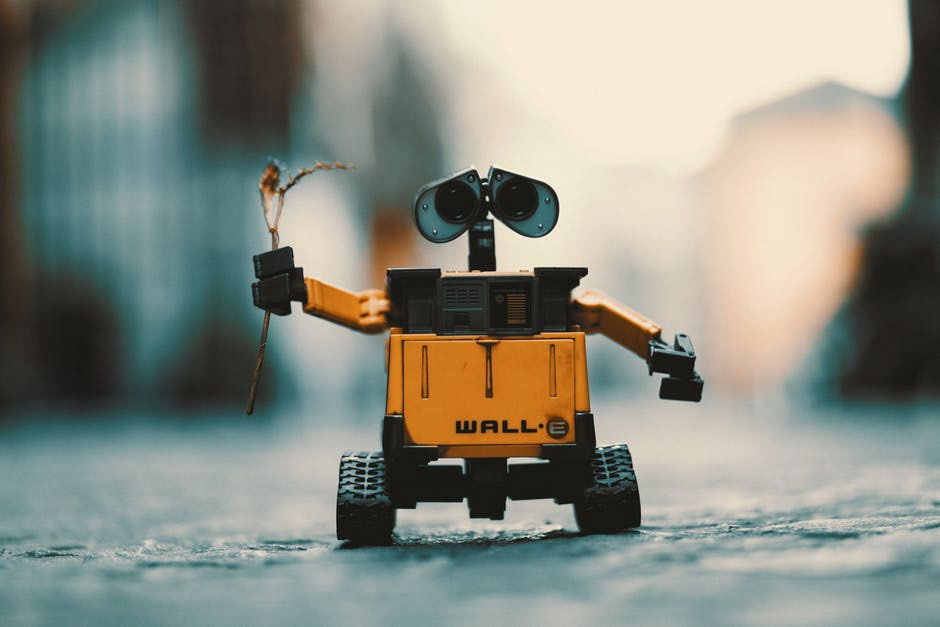100+ JDE CNC Interview Questions And Answers

In case you’re searching for JDE CNC Interview Questions and Answers for Experienced or Freshers, you are at the correct place. Cracking a JDE CNC interview is no joke. The interviewer is probably going to be an even more experienced JDE CNC and would be highly proficient in (one or more of) networking, operating systems, database administration and maybe even in multiple technologies and/or third party systems. I’ll be covering important aspects of JDE CNC interview along with questions and answers list, which will enable you to crack interviews with ease.
If you are yet to read my previous article on roles and responsibilities of JDE CNC, I highly recommend you to read it as well. Before we begin with questions and answers, please understand that covering every single answer in-depth will make this post unreadable and hence we will stick to understanding the approach of answering questions rather than elaborating textbook kind of answers.
Views expressed in this post are based on my personal experiences and may contradict from readers’ opinion or actual answers. Please refer official Oracle documentation for respective topics to obtain technical answers on the same. If you find something incorrect in this post, please use comment form to inform me about the same, I will update the post accordingly.
So let’s begin…
- Q1) Explain JDE Installation process
Ans. You’re expected to provide an overview of steps involved in installation of JDE. Don’t forget to mention about validating MTRs before you start describing the process. A quick overview of general process is as follows:
- Validate MTR
- Install pre-requisites like runtime libraries, etc. on servers
- Install database on database server
- Run deployment server and enterprise server installations (web server can be setup simultaneously as well)
- Install Server Manager and upgrade its Tools Release to latest
- Upgrade Tools Release on other servers
- Extract Planner ESU on DS
- Create Installation Plan
- Run Installation Workbench – PS920
- Install Planner ESU – PS920
- Apply Fix Current ESUs
- Install Tools Release Specific ASI
- Full package build (successful) and deploy
- Port test, setup JAS (if not already done) and surface testing
- Repeat steps 8-14 for next environments
- Setup AIS, BSSV, OVR etc. as per requirements
- Q2) Explain JDE Upgrade Process
Ans. Steps 1-7 are same as installation process, but then it takes a twist. Depending upon Simplified and Traditional upgrades some steps may vary. Also, depending on single jump or double jump upgrades, answers may vary. This is an advanced CNC topic and would not be asked to a fresher or junior CNC, I am explaining a 1000 ft. overview of steps involved in single jump, e.g. JDE 9.1 to JDE 9.2, involving SQL Server database in both versions (for simplicity, and less typing) Steps 1-7 are similar as installation and next steps go as follows:
- Bring JDE 9.1 (previous version’s) databases to new DB server, primarily we need JDE910 (shared schemas), PD910 (central objects) and JDE_PRODUCTION (business data & control tables)
- We will begin with Pristine upgrade and for that we need only shared schemas in JDE910, data will be loaded from Planner environment
- Fix SY910 to modify machine names, database ownership, etc. (This is an extensive list, and an experienced CNC should be able to understand. If you’re a fresher reading this, you need to shadow someone during an upgrade to understand in-depth)
- Create Pristine Installation Plan
- Run Installation Workbench > Identify and resolve issues, make notes for reference during next environment upgrades
- Configure Enterprise Server
- Apply ESUs > Planner, Baseline, Fix Current, Tools ESU
- Apply ASI
- Full Package Build and Deploy – PS920
- Enterprise Server port test success
- Prepare for DV Upgrade: Set mod merge flags, copy PD910 to E920 directory, etc.
- Create DV920 Installation Plan
- Run Installation Workbench > Identify and resolve issues, make notes for reference and avoid issues during PY upgrade
- Apply ESUs similar to PS920
- Apply ASI
- Full Package Build and Deploy – DV920
- Release environment for retrofitting
- Work with developers to solve issues
- Copy Specs to PY after retrofitting
- Data only upgrade PY
- Release for internal testing
- Similarly Upgrade QA
- Release for client testing
- Note down observations, challenges and fixes
- Plan strategy for production
- Go Live – PD upgrade and hyper care support
If you are answering any of the above two questions, it opens door for a plethora of questions related to latest JDE features, JDE upgrades, and other JDE related configurations. Below are a few of them, some of which may be asked directly as well. Most of these are advanced topics and most likely won’t be asked to junior CNCs but please do not miss questions on 9.2 latest features. Even if you’re new to JDE CNC, I’d recommend you to go through these questions, so your “unknown unknowns” would turn to “known unknowns”, and then you can plan on learning them.
(Note: If you are a junior CNC who is appearing for interview and reached this article at last minute, skip to next section of JDE CNC Interview Questions – Basic Level)
- Q3) What precautions should you take when you’re hosting database server and enterprise server on the same host?
- Q4) How to perform in-place upgrade?
- Q5) How to perform tools release upgrade?
- Q6) How to perform multi-foundation tools release upgrade?
- Q6) How is data only upgrade performed?
- Q7) Explain additional steps involved in unicode conversion
- Q8) Explain how a double jump (8.11 -> 9.1 > 9.2) upgrade works?
- Q9) Explain how to handle migration from AS400 to Linux OS and Oracle Database during upgrade?
Ans. R98403 UBE or Data Migration Software - Q10) Which customization flags are set during upgrade? Do you know the table and column names? How does changing these flags affect the upgrade process?
- Q11) Explain major changes in JDE 9.2 as compared to previous application releases?
- Q12) Explain AIS Server Installation and Orchestrator Studio Installation process
Ans. For AIS:
Install WebLogic > Upload AIS Component to Server Manager > Create AIS Instance > Configure AIS instance (working JAS required) > Test AIS Instance
For Orchestrator Studio:
Install WebLogic > Install ADF > Upload Orchestrator Component to SVM > Create Orchestrator Instance > Configure Orchestrator Studio Instance (working AIS required) > Test Orchestrator Studio - Q13) How has Orchestrator Studio installation process changed in latest JDE tools releases?
Ans. Starting TR 9.2.4.1, Orchestrator Studio comes built in with AIS installation. Earlier it required separate ADF installation and Orchestrator Studio instance creation through Server Manager. - Q14) How to setup and configure fresh OVR server?
- Q15) How to migrate OVR reports from 11g to 12c?
- Q16) Explain the significance of UDOs and what are the benefits of introducing them?
Ans. Easier management, easier security control with UDO action and view security, better change management for objects - Q17) What is OMW Web? Which application is used to access OMW Web? What is P98220W used for?
- Q18) What is the difference between OMW and OMW Web? Can we promote OMW projects from OMW Web? When can we not promote them?
- Q19) Which application is used for UDO management? What is application P98220U used for? What activities can we perform using P98220U application?
- Q20) How to enable Long User IDs in JDE?
- Q21) How to enable Long Passwords in JDE?
- Q22) What is difference between P98LPSEC and P98OWSEC?
- Q23) How to configure LDAP in JDE? Which applications are used for the same?
- Q24) How to enable CFR Auditing?
- Q25) Have you worked with CFR Auditing before? Explain precautions to be taken during Upgrade when CFR auditing is enabled
- Q26) Explain how standard JDE scheduler would work when you have a single enterprise server with multi-foundation setup? What precautions need to be taken related to JDE scheduler when you perform multi-foundation setup/multi-foundation tools release upgrade?
- Q27) Explain performance tuning steps for JDE
- Q28) Explain significance of IPC parameter in JDE.ini
- Q29) An application is taking too long to fetch results, probably a query optimization issue. Describe steps to troubleshoot
JDE CNC Interview Questions – Basic Level
While installation, upgrade and advanced CNC tasks are extremely important to understand and one must have hands-on experience, often most projects are for CNC support. Hence, if you prepare well for below JDE CNC interview questions, you’d hopefully clear the interview in case you’re being hired for CNC support project.
- Q1) Explain package build process till 9.1.5 and afterwards
Ans. This is an all time favorite question for CNCs. Make sure you know the process well. Explain the “include” and “source” folder’s file transfer process from DS to ES and building DLLs (Windows) along with specifications build. With 9.1.5, UBEs R9621 and R9622 have been replaced with R9621S (Server Build) and R9622C (Client Build). Quick deploy functionality has been enabled, where lock is not required for deployment of application versions and UBE versions. 9.2.1 onwards, F00942T table has been introduced where source and include files are moved to database. Key tables are F98780R and F98780H. - Q2) Explain quick deploy functionality in detail
Ans. Explain about lock process in early releases of JDE and how it doesn’t acquire locks for UBEs and Application versions from 9.1.5 - Q3) Explain the role of F00942T table and how it affects the package build process
Ans. Explain about the EMDBSRCFLG parameter and how files are transferred to database from package build machine and retrieved from the same on enterprise server. - Q4) Explain what happens during package assembly > package build > package deployment
Ans. Explain various steps and tables accessed. Assemble – Created Record. Build – Building specifications. Deploy – Activate changes. - Q5) Explain the use of deployment monitoring application
- Q6) How to promote/demote OMW projects?
Ans. Using change status option. - Q7) What do project status such as 21, 26, 38 indicate?
Ans. Hint: DV, PY and PD - Q8) What are allowed actions? How to configure them?
Ans. Hint: OMC - Q9) What are default roles in OMW projects? What is significance of roles like Originator, Developer, and PVC Administrator?
Ans. Allowed actions are configured on Role > OMW Role mapping which determine the access level - Q10) How to setup custom project promotion rules? (slightly advanced)
- Q11) Which application is used to monitor jobs? What are the steps to terminate a job? How to put waiting jobs on hold? How to delete waiting jobs?
Ans. Using WSJ (Work With Submitted Jobs) application - Q12) What are job queues in JDE?
- Q13) Which application is used to manage job queues?
Ans. P986130 - Q14) What is single threaded and multi-threaded job queue? How to setup such job queues? Explain a scenario where you would recommend a single threaded job queue?
- Q15) How to hold a job queue?
- Q16) When would you hold a job queue?
Ans. Before deployment is one example. - Q17) How to create user IDs in JDE? (Hint: P0092 application)
- Q18) How to create roles in JDE? (Hint: Form exit > Add role in P0092)
- Q19) Explain the significance of role sequence number (Hint: Security)
- Q20) Which application is used to assign role to user? (P95921)
- Q21) Which application is used to configure security record for an user? (Hint: P98OWSEC/P98LPSEC)
- Q22) How to assign environments to roles? Which table stores this mapping? (P0092 > Row > Environments, F0093 – Library List Table)
- Q23) How to differentiate production and non-production roles? (Based on environments assigned)
- Q24) Which application is used to configure security in JDE? (P00950)
- Q25) How to configure application, action, data selection & processing option, row, column security?
- Q26) What is the difference between inclusive and exclusive row security?
- Q27) How to identify security conflicts for an user?
- Q28) How to apply UDO security?
- Q29) How are UDOs stored in JDE 9.2?
- Q30) How to create and promote menus/tasks?
- Q31) How to promote all menus from one environment to other?
- Q32) How to promote specific UDCs from environment to other?
- Q33) How to setup and activate JDE scheduler?
- Q34) Have you worked on any third party scheduler? If so, explain the difference between JDE standard scheduler and third party scheduler.
- Q35) What are the drawbacks of JDE scheduler?
- Q36) Which parameter in JDE.ini determines auto start of JDE scheduler process on enterprise service start?
- Q37) Explain different types of recurrence that can be set in JDE job scheduler
- Q38) How to deactivate scheduled jobs?
- Q39) How to purge scheduler job records?
- Q40) How to restart JDE scheduler?
- Q41) Explain fat client setup process in 9.1/9.2
- Q42) How is the fat client setup process different for 9.2 as compared to 9.1? (Hint: Weblogic)
- Q43) How to enable JDE debug logs on a fat client?
- Q44) How to enable JAS debug logs on a fat client?
- Q45) Explain process of installing ESU
- Q46) Explain rollback ESU process (Hint: It is NOT deleting ESU)
- Q47) What are special instructions? What are automated special instructions?
- Q48) What are data sources in JDE? What is the significance of data sources and how is it important to establish proprietary JDE CNC architecture? Explain difference between SVR and DB Data Sources
- Q49) What is OCM used for? How to map UBEs to go to specific server (Batch Server)? How to map tables for particular environment to point to a particular data source?
- Q50) How to create a custom pathcode? How to create custom environment? What is the significance of “J” in environments such as JDV920, JPY920 etc.
- Q51) How to perform environment refresh?
- Q52) How to perform environment refresh when CFR auditing is enabled in production but not in destination environment?
- Q53) How to add/edit/delete printers?
- Q54) What is print immediate option in JDE.ini and JAS.ini used for? How to disable printing in specific environments?
- Q55) How to setup default printer based on user/role?
- Q56) What are central objects used for?
- Q57) How to perform pathcode refresh?
- Q58) How to install server manger agents on different operating systems?
- Q59) How to enable JAS debug logs? What is the significance of JAS debug logs? (Application level activity)
- Q60) How to enable debug logs on call object kernel?
- Q61) When would you enable call object kernel logs instead of JAS debug logs? (Hint: Identify issues with BSFNs running on ES)
- Q62) How to capture BI Publisher logs? (Hint: XMLP Kernels)
- Q63) What is the difference between large job and small job XMLP kernels?
- Q64) How to purge work center messages?
- Q65) How to install JAS? How to install BSSV server?
- Q66) How to surface test a BSSV server functionality?
- Q67) How to build a BSSV package, explain process to include custom BSSVs
- Q68) How to enable debug logs on Server Manager and Agents?
- Q69) Explain basic DDL and DML commands along with usage
- Q70) Explain how joins work
- Q71) What are deadlocks in database? How are they created? How to kill/resolve deadlocks in database?
- Q72) What is the significance of tokens in JDE Object Management? How to release token for an object?
- Q73) You perform following activities: open JDE web > login to JDE > open address book application using fast path > fetch a record > select it > edit it and save it. Explain what is happening in JDE in as detailed manner as possible
I began my career as a JDE CNC Consultant and over a period of 8 years I have faced plenty of company interviews as well as client interviews. I have nailed a lot of them, failed and got grilled at a few as well. Based on my experiences I have made the above list of JDE CNC interview questions.
Hope this helps you to prepare for and crack your next interview. You can also use this list to note down and learn things you’re yet to explore.
How was your last interview? I highly encourage you to use the comment form at the bottom to let us know the questions you were asked (and answers you gave). Let us make this post a one-stop goto post for JDE CNC interview questions and answers.





9.2 onwards, F00942T table has been introduced where source and include files are moved to database. Key tables are F98780R and F98780H.
Not from 9.2 onwards. It should be from 9.2.1 Onwards
Dear Vamshi,
Thanks for pointing out, I have updated the answer.
Thanks your interview question really help me!!!!!!! 🙂 🙂 🙂